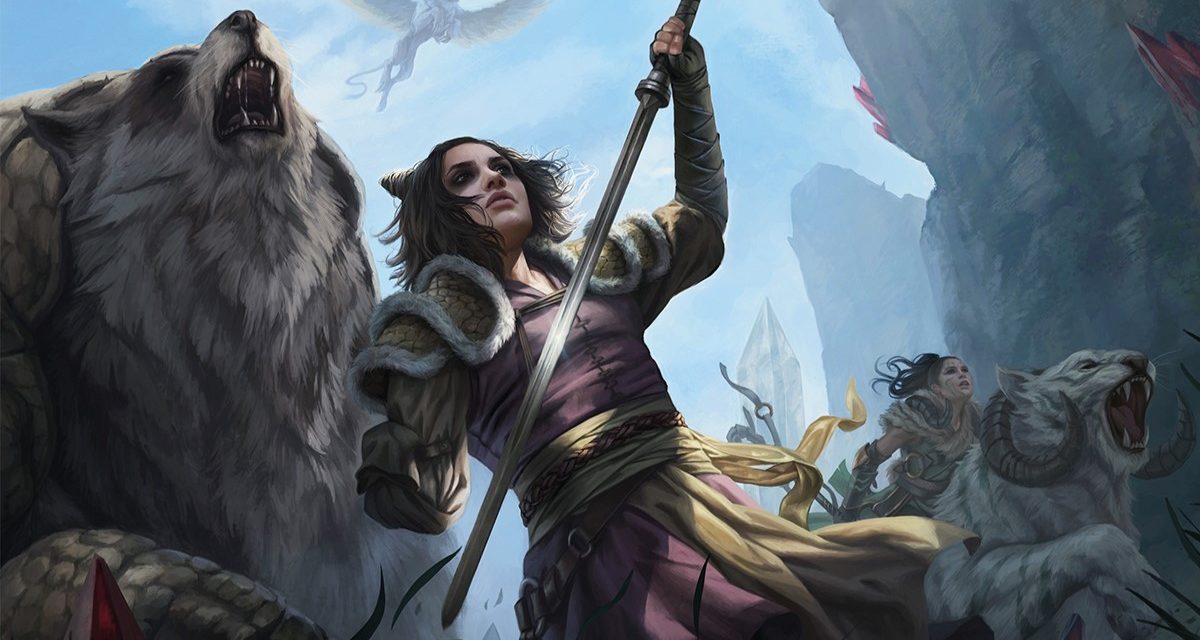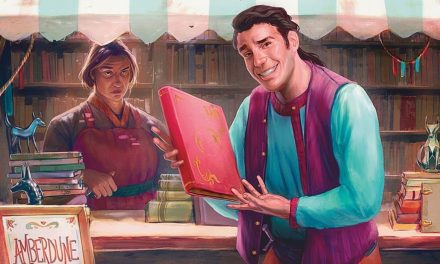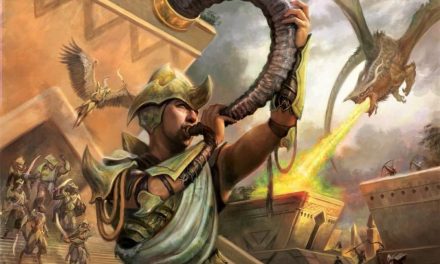Are you a pet person? Whether you’re a dog person, a cat person, or a poisonous Flying Snake person, the Beast Master Ranger might be the subclass for you.
No offense to Spider Wolf people, but oversized spiders aren’t for everyone.
The Beast Master archetype is another iconic class that harkens back to the early days of Dungeons and Dragons. Back in the day when animal companions were all the rage at the game table.
Who am I kidding, the animal companion is still all the rage at the game table!
If you enjoy teaming up with a wild beast companion that respects and protects the same wilderness as you and has the same enemies, you’ll love the Beast Master Ranger class.
The path of the Beast Master is not an easy one, but with the right build and animal companion, this class can really shine. It definitely requires some planning.
We’re here to help you down that path with the full subclass guide to the Beast Master Ranger subclass in D&D 5e!
What is the Beast Master Ranger in D&D 5e?
Put quite simply the Beast Master is exactly as the name implies, a Ranger with a loyal animal companion.
When most people think of Rangers, this is exactly what comes to mind. After all, the rough-hewn explorer who braves dangerous frontiers with their trusty and loyal beast companion at hand is classic fantasy storytelling!
Beast Masters in 5e run the gamut. They might be anything from Halflings riding Giant Beetles to Gnomes flying on the backs of Pteranodon and even Drow elves with panther companions.*
*It’s hard to get through a Beast Master guide without mentioning Drizzt Do’Urden and his loyal animal sidekick Guenhwyvar. I won’t mention them again, I promise.
The Beast Master’s loyal animal companion attacks alongside your Ranger in combat. This makes it an invaluable asset on the battlefield to you and your party.
This subclass is much like any other Ranger, protecting civilization and the wilderness from terrors such as Orcs and Giants. However, they aren’t tracking their quarry while surviving in the untamed wilderness alone!
The Beast Master subclass is one of the original subclasses found in the 5e Player’s Handbook alongside the Hunter Ranger subclass.
Role in the Party
The Beast Master subclass in D&D 5e is a Ranger first and foremost.
In simple game terms, a Ranger can be seen as a martial class that specializes in overcoming natural obstacles. Rangers are damage-dealing scouts who specialize in wilderness survival and tracking enemies.
The Beast Master subclass is no different, however, they also have an affinity with animals.
A Ranger with this subclass gains the benefit of support in the form of an animal or primal companion. After all, teamwork makes the dream work!
An effective Beast Master adds an extra layer of combat support that accentuates the Ranger’s melee prowess as well as their useful spell list.
Players who decide to take on this path should also be aware of the campaign style and environments that will be frequented.
More than most other characters, your Beast Master Ranger’s exact role is largely determined by building the character in-line with the adventure’s expectations as discussed in your Session Zero.
For example, a Beast Master with a flying companion can be limited if the campaign involves a lot of dungeon crawling. The same goes for an aquatic companion unless goldfish companions in fish bowls are more your thing.
While this Ranger subclass can be molded to fit almost any campaign style and environment, it requires some thought and planning to truly master. Thankfully, the Primal Companion option can alleviate some of the newcomer and planning issues.
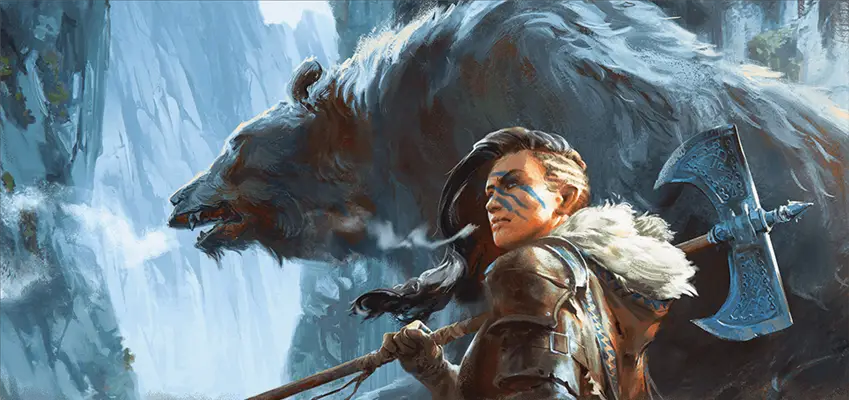
Beast Master Ranger Features 5e
Before we go into the Beast Master’s subclass Feature Abilities, it’s worth noting that Tasha’s Cauldron of Everything includes a handy variant feature.
While the Ranger Companion feature in the Player’s Handbook concentrates on beastly sidekicks, Tasha’s incorporates Primal Companions.
Is there any real difference when it comes to which feature to choose? The short and to-the-point answer is a resounding YES.
If your Dungeon Master allows for the alternate Primal Companion feature, you’re in luck! In most cases, this feature far outshines the PHB’s Ranger Companion ability.
We’ll be going over both options in this guide as we cover the features you gain as a Beast Master Ranger.
Ranger’s Companion (Level 3)
Unfortunately, the Featured Ability that this subclass is founded upon is also its greatest flaw.
The 5e Player’s Handbook subclass contains several serious technical flaws that Beast Master characters will need to work around.
The most notable of these is an admittedly underwhelming animal companion and rough action economy for your Ranger, which can make things difficult and frustrating when it comes to combat.
Choose a beast that is no larger than Medium and that has a challenge rating of 1/4 or lower. Add your proficiency bonus to the beasts AC, attack rolls, and damage rolls, as well as to any saving throws and skills it is proficient in. Its hit point maximum equals its normal maximum or four times your ranger level, whichever is higher.
Let’s dig into the details a bit.
When you use the Attack action, ordering your companion to attack uses up one of your attacks. Keep in mind that this cuts into your action economy so you’ll need to plan your turn accordingly.
The Beast Master renders standard Ranger class choices like Hunter’s Mark and Favored Foe virtually useless, thus you give them up in exchange for what amounts to a neutered Ranger with an underwhelming “pet”.
The most important choice to make if you decide to play the PHB Beast Master is your choice of companion. While there are many alternatives, the great majority of them are completely ineffective.
If you’re okay with one of the few genuinely effective alternatives, your sidekick can be a useful addition to the entire adventuring group.
As you gain levels it should also be noted your animal companion will also become quite burdensome, they require healing and other resources and they will take a beating at higher levels if not end up dead. This can really start to annoy Clerics, many of whom get cranky when asked to constantly heal the party and now a pet.
All of that being said a more experienced player is more apt to ask the right questions when it comes to deciding on a companion.
Choosing an Animal Companion
The most important question to ask is what type of companion you want.
Do you want a mount? Perhaps a flying mount? Are you looking for a stealthy companion to be a spy or a scout? Or do you want a scrappy companion who excels in combat?
Maybe you’d like a hybrid companion who excels in multiple areas.
If you choose a companion that is more combat-oriented, features such as Multiattack, Flyby Attack, poison-based attacks, or even Pack Tactics can come into play. This can most definitely make things more interesting.
Rather than going over the pros and cons of every possible animal companion, we’ll instead look over the most popular and generally effective options.
- Blood Hawk – Great for scouting and Pack Tactics is always nice to have.
- Flying Snake – A personal favorite with excellent movement options, Flyby and Blindsight are especially handy, reliable poison damage!
- Giant Badger – Decent damage, useful for burrowing.
- Giant Crab – Solid armor class and can be handy for grappling weaker mobile enemies. An enemy will still need to use their action to escape the grapple.
- Giant Frog – The Swallow attack allows the Giant Frog to consume Small foes, momentarily removing them from the fight!
- Giant Poisonous Snake – Small blindsight range can still be useful and swim speed is nice to have. Poison damage is decent, but the low DC makes it risky.
- Giant Wolf Spider – An especially great choice for smaller PCs such as Gnome, Halflings, Goblins, and Kobolds. The Giant Wolf Spider doubles as a mount for smaller PCs, is stealthy, has excellent movement thanks to Spider Climb, and has a poisonous bite.
- Pony – Handy as a mount for smaller races.
- Pteranodon – a great mount for smaller PCs as well as moderately effective in combat due to its Flyby attack feature.
- Wolf – The classic and iconic Beast Master companion! Pack Tactics is a great resource, especially at lower levels. Keen Senses also is a great addition and should help with alerting the party of enemies as well as enhancing their exploration capabilities.
It should be noted that these lists are subjective. The type of campaign will play a factor as will the way in which a Ranger wants to utilize its animal companion. For example, a low-combat subterfuge campaign makes choices like the Raven more appealing.
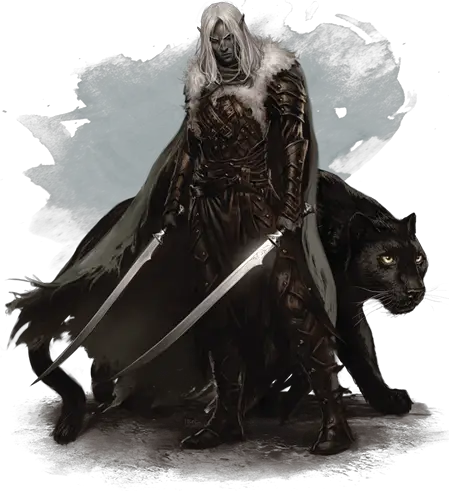
Primal Companion (Level 3 Optional)
The Primal Companion option is made available in Tasha’s Cauldron of Everything and it really brings Beast Master to the forefront as they should be. I strongly suggest allowing this option as a DM and choosing it as a player over the Ranger’s Companion feature.
This not only improves the subclass, but it also simplifies it. You have three choices to choose from: Beast of the Land, Sky, or Sea.
This new Companion option also fixes the action economy flaw that previously hampered this subclass in so many situations.
All it takes is a Bonus Action to order your companion around now. This opens up your Ranger to, you know, be a Ranger and no longer creates a dumbed-down version of your animal companion that’s just kind of… there…
Other perks of this feature ability include being able to spend a spell slot to raise your primal pet from the dead rather than spending 8 hours to be reunited with them.
While the Primal Companion feature may take some of the variety away from Beast Masters, it also allows you to change up your companion for a given situation.
The best way to roleplay this type of Beast Master is to view them as Rangers who bond with all animals rather than just one specific beast.
We’ve listed the three possible choices of Primal Companions from most effective to least.
Beast of the Sky
Flyby and 60-foot fly speed make for a wonderfully mobile companion.
It may have fewer hit points than the other alternatives, but with the ability to stay out of melee range continuously, this is less of an issue. Having an airborne companion dissuades you from utilizing it as a defender by putting itself between you and your attackers.
Also, Beast of the Sky’s Armor Class is equal to Beast of the Land and Sea. If your Beast of the Sky’s health is becoming an issue, it can utilize Flyby to retreat to safety.
Beast of the Land
This Primal Beast of the Land companion can move about swiftly. It has a speed of 40 ft. on both land and sea.
This is not bad at all, considering it’s faster than most PCs and enemies. Their damage will be equal to or more than that of a weapon attack, and Charge allows your companion to knock attackers Prone if they have the space needed to do so.
Unfortunately, because your beast only has one attack until level 11, it can’t benefit from knocking adversaries prone for quite a bit. But that’s where coordinating with your teammates comes into play!
Beast of the Sea
As expected, the Beast of the Sea option is effective in aquatic campaigns but not so much otherwise. It is limited to a 5-foot land speed which means it’s left to stagger around on land and unlikely to be of much help in a fight out of the water.
There are of course certain spells that can overcome this handicap, but it still costs resources to do so. Also, this is really only useful in a coastal campaign at best.
However, one awesome feature is the Beast of the Sea’s attacks trigger the grapple feature when they hit home.
This can be an amazing perk for lower-level to mid-level parties. However, unless you run around fighting beach party battles or like the idea of suffocating an octopus in a dungeon, the Sea of the Beast only works for aquatic campaigns.
Though I can’t get the surreal image of Bob the Octopus crawling around a dungeon out of my head suddenly.
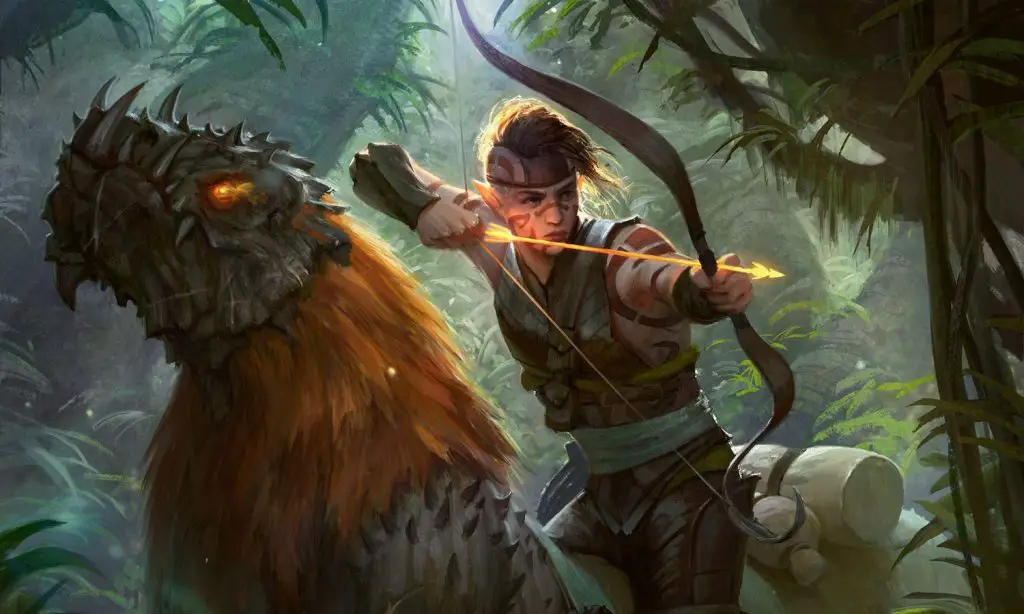
Exceptional Training (Level 7)
This is where things get more effective with the Beast Master Ranger.
Exceptional Training is a useful feature that Rangers of this subclass gain at 7th level. This feature is available to both Ragers with animal companions as well as those with primal companions.
Exceptional Training. Beginning at 7th level, on any of your turns when your beast companion doesn’t attack, you can use a bonus action to command the beast to take the Dash, Disengage, or Help action on its turn.
In addition, the beasts attacks now count as magical for the purpose of overcoming resistance and immunity to nonmagical attacks and damage.
A lot of options open up for you when you’re fighting alongside your beast or primal companion. Exceptional Training gives you even more tactical options which means you’ll want to stay flexible and strategic.
It is sometimes preferable to attack twice rather than having your loyal companion attack.
In certain cases, giving your partner some more movement may allow them to assault on the next round. On the other hand, you may decide to have them dodge the enemies’ attacks while drawing fire away from you and your party.
Another added bonus to this featured ability is animal companion attacks are treated as magical attacks which comes in handy at 7th level and higher.
Prior to WotC adding this ability to Exceptional Training, animal companions were pretty useless against many higher-level foes. Thankfully, things have picked up nicely!
Bestial Fury (Level 11)
At level 11, you gain the Bestial Fury feature.
This is another great positive for the Beast Master Ranger, increasing the number of attacks leads to increased damage which is always good.
Once again, this feature is available to both Rangers with animal companions as well as those with primal companions.
Bestial Fury. Starting at 11th level, when you command your beast companion to take the Attack action, the beast can make two attacks, or it can take the Multiattack action if it has that action.
This ability really shines if you’ve picked an animal companion with the multiattack feature and can really increase the damage being dished out. One such companion that benefits greatly from this is the Giant Badger.
Bestial Fury is pure value for you and is great for making sure that you can put out as much damage as possible.
Share Spells (Level 15)
Finally, we come to the Beast Master Ranger’s capstone feature: Share Spells.
This is another wonderfully effective ability that just brings pure benefit to how you and your loyal companion work together.
As with the other features you’ve gained, this feature is available to you whether you’ve taken an animal companion or a primal companion.
Share Spells. Beginning at 15th level, when you cast a spell targeting yourself, you can also affect your beast companion with the spell if the beast is within 30 feet of you.
Certain spells (especially buffs) can be a great boon for you and your animal companion. As they say, two buffed allies are always better than one!
It also makes for an efficient use of your concentration since you’re effectively getting two buffs for the price of one.
The only downside to this feature is that Rangers themselves don’t have a huge selection of buffs to use with this. Options like Stoneskin, Protection from Energy, and Water Breathing are great, though, so I’m not complaining too much.
Also keep in mind that this works for spells like Cure Wounds if you’re healing yourself. Now you can efficiently tend to your loyal companion’s wounds as well as your own!
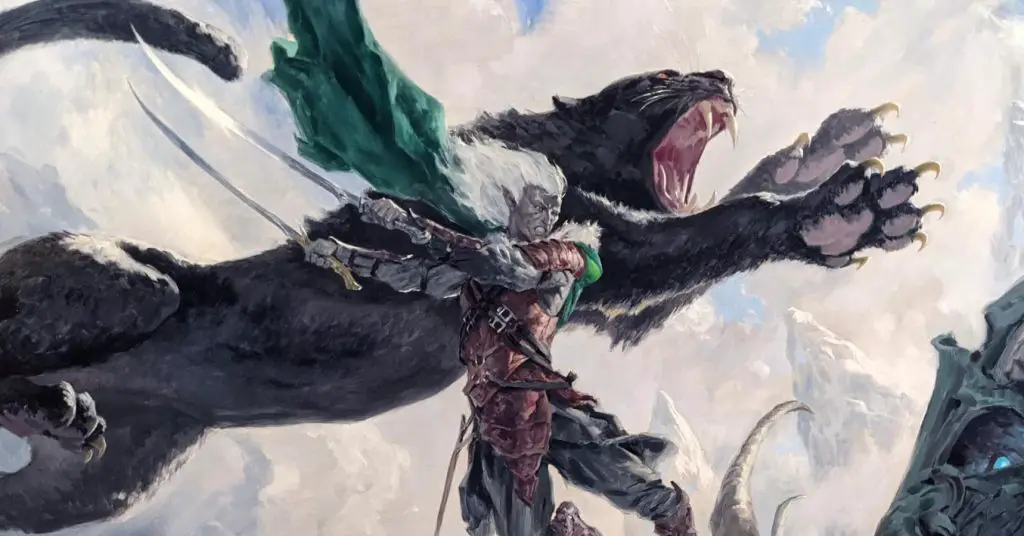
Ability Scores – Beast Master Ranger
A Beast Master Ranger’s ability scores are pretty straightforward and laid out in the Player’s Handbook. It’s good advice to follow.
Rangers should generally focus on Dexterity, Strength, Wisdom, and Constitution in that order. There is a caveat to that, however, whether you focus on Strength or Dexterity as your Ranger’s top priority.
If you’re all about taking on your foes up close and personal with melee attacks, prioritize Strength.
If you prefer quietly stalking through the forest, improved AC, improved initiative, and ranged combat then Dexterity is your priority first and foremost.
One note, without getting ahead of ourselves, you want to keep the Beast Master’s animal companion in mind when selecting between these two stats as well.
Wisdom should help you with your spellcasting and shrugging off other mind-affecting spells. Animal Handling, Insight, and Survival are also core ranger skills that are reliant on Wisdom.
Given that Rangers are martial classes Constitution is also important if you want to be able to mix it up and stay on your feet.
Per the usual Ranger build Intelligence and Charisma are the dump stats for a Beast Master. Don’t worry your beast companion will still love you.
Related: Ability Scores in D&D 5e Explained!
Connections
Given that the Beast Master is a classic and iconic fantasy archetype they should not be hard to involve in your game. Anywhere there is wilderness there are usually many beasts for the Beast Master to develop a bond with.
So how might you connect your Beast Master to your party and to the campaign? Thankfully, Beast Master Rangers can join adventuring groups and adventures in an infinite variety of ways.
Rangers associate with Druids quite frequently and Druids (especially those of the Circle of the Shepherd) also bond with the beasts of the wild. There is plenty of common ground for these wilderness-based classes which should make for a fast friendship.
As for your background, an interesting option is what I would refer to as the Tarzan or Romulus and Remus approach. Perhaps your character was orphaned at a young age and taken in by wolves.
Maybe your PC is just typically uncomfortable around others but finds acceptance and comfort in the animal kingdom. I know I certainly do!
The companion aspect also allows for the animal companion itself to connect with the adventuring party.
Perhaps the party encounters a wolf who just so happens to be the right-hand “man” of your Beast Master. How would your Ranger react? How would the wolf react? What about the party?
We’ve mentioned Druids, but many Rangers also connect with martial classes such as Barbarians, some of whom actually worship animals. Maybe they have a deep reverence for your pet and by extension have great respect for your Ranger.
Is the Beast Master Ranger Good?
This feels like a loaded question, but the answer is both yes and no. While this feels like a cop-out answer, it most certainly is not.
When the Beast Master was first unleashed onto the 5e crowd, it underwhelmed many who loved the classic Ranger with animal sidekick trope.
Even Wizards of the Coast admitted it had some flaws and reacted accordingly.
However, things have since changed. There have been multiple tweaks over the years and even some new options presented that make this subclass more effective and fun to play.
The Ranger Companion version of the Beast Master might not be the best choice for a first-time player, but it could still be a great choice for veteran players who understand the 5e system and all of its nuances.
However, the Primal Companion simplifies the subclass enough for newcomers and veterans alike in a way that keeps it effective and (most importantly) fun.
It’s also important to remember that your choice of animal or primal companion is absolutely vital. Some companions shine in combat, some as scouts, and some as mounts. You’ll want a clear idea of how you and your companion work together to bring value to the party.
While the Beast Master Ranger still finds itself as the butt of many jokes because of its rocky start, the tweaks and expanded options have done a lot for this subclass.
The subclass suffers if taken strictly as it’s presented in the Player’s Handbook. However, using the Primal Companion options goes a very long way to redeem the subclass.
While it’s ultimately up to your DM if the Primal Companion option is okay to use, I strongly recommend allowing it.
Related: Ranking Every Ranger Subclass in D&D 5e!
Conclusion – Beast Master Ranger in D&D 5e
As always we hope you’ve found this guide to the Beast Master Ranger to be helpful.
In the minds of many, this is the iconic Ranger subclass. I mean, when you consider how much style and possibility there is to play with, the options seem almost limitless and they’re all pretty epic!
I’m glad that WotC has released errata and options that have allow the Beast Master to get the recognition that it deserves. It truly shines now!
But what about you?
Got thoughts or questions about the Beast Master Ranger you’d like to share? Let’s chat in the comments below!
Don’t forget to sign up for the Tabletop Joab newsletter! It’s the best way to get all the latest player guides, DM Tips, news, reviews, and more for D&D 5e right to your inbox!
You can also follow Tabletop Joab on Facebook and Twitter.
If you found this article helpful and want to support the site, you can buy me a coffee here! (It’s not expected, but very appreciated!)

